Sarcopterygii Characteristics
- Muscular lobed paired fins joined to body by single bone
- Two dorsal fins with separate bases
- Has a pulmonary vein
- Phylogenetically, this clade should also include tetrapods
- Formerly treated as a subclass of the Osteichthyes (bony fishes)
See additional lobe-finned fish fossils here
|
|
Subclass Actinistia — Coelacanths
Characteristics
- Large size (~2m)
- In most, a distinctive 3-lobed caudal fin with fleshy central lobe
- Fins muscular, limb-like ("lobed")
- Skeleton mostly cartilagenous
- Modern species are marine, in deep water
- 2 extant species (first one discovered in 1938)
|
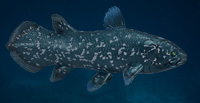
Comorese Coelacanth, Latimeria chalumnae, model
|

Comorese Coelacanth, Latimeria chalumnae, preserved specimen
Los Angeles Museum of Natural History
|
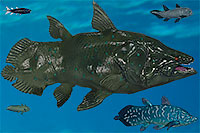
Models of some extinct coelacanths (Actinistia). Note that the earlier forms were quite small and lacked the symmetric 3-lobed tail of more derived species.
|
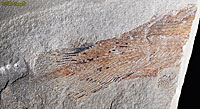
Fossil of the posterior portion of Caridosuctor populosum, a coelacanth of the Carboniferous Period; note the 3-lobed tail; Montana
|
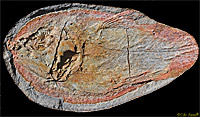
Whiteia woodwardi fossil; Early Triassic Period, Madagascar
|

Coccoderma barvaricum fossil; Late Jurassic Period, Europe
|
|
Subclass Dipnoi — Lungfishes
Characteristics
- Elongated bodies
- Dorsal, caudal, anal fins fused into single rear fin
- Fins flipper-like or reduced to long filaments
- Paired lungs
- Live in tropical rivers or swamps prone to drying
- 6 living species
|
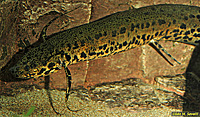
West African Lungfish, Protopterus annectens; Order Lepidosireniformes
|

Marbled African Lungfish, Protopterus aethiopicus; Order Lepidosireniformes
|

Australian Lungfish, Neoceratodus forsteri; Order Ceratodontiformes
|

Cast of Fossil Lungfish, Scaumenacia curta (Devonian Period, Quebec)
|
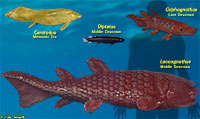
Models of extinct lungfishes.
|
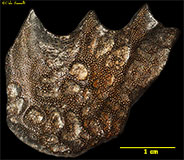
Fossil Lungfish Pterygopalatine Toothplate, Ceratodus africanus? (Cretaceous Period, Niger)
|
|
Stem Tetrapodamorpha & Tetrapod Origins
Characteristics
- The following image depicts the earliest tetrapods (Acanthostega and Ichthyostega) with some closely related lobe-finned fishes
- All date from the late Devonian Period
- Osteolepiform fishes — e.g. Osteolepis (at right) and Hyneria, Mandageria & Eusthenopteron (below) — share with tetrapods various skull characteristics, internal nostrils and labyrinthodont teeth (with folded enamel)
- They also have fins with distinct humerus, ulna, radius or femur, tibia, fibula
- All of these species probably lived in fresh water (only Ichthyostega was probably partially terrestrial)
|
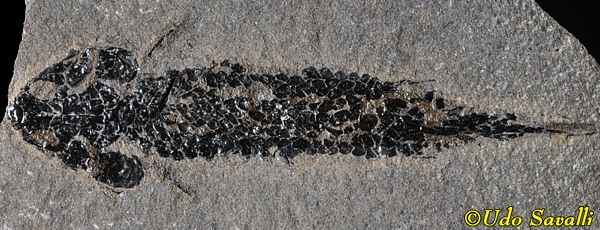
Osteolepis panderi fossi; Devonian Period, Scottland; Order Osteolepiformes
|
|
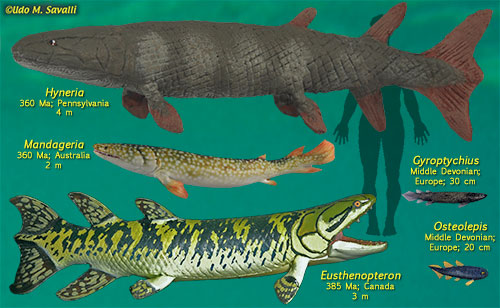
Models of basal tetrapodomorphs: the "osteolepiform" fishes.
View Larger Image
|
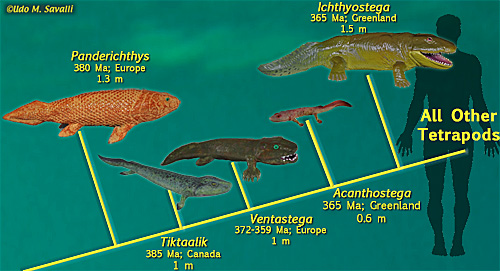
Phylogenetic sequence for the origin of tetrapods.
View Larger Image
|
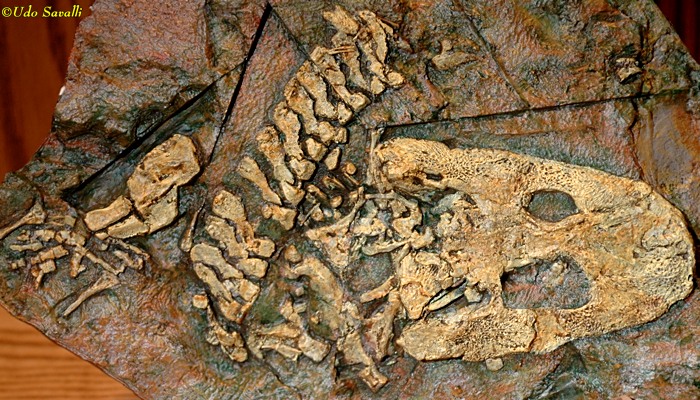
|
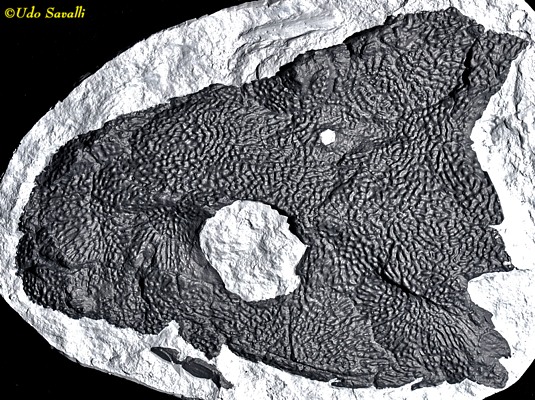
|
|
Cast of partial Acanthostega gunneri Fossil (Wyoming Dinosaur Center)
|
Cast of Ichthyostega Skull
|
|
















